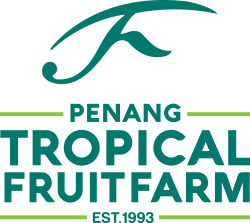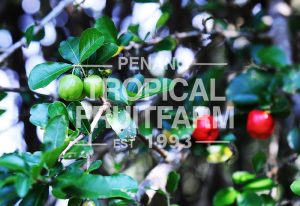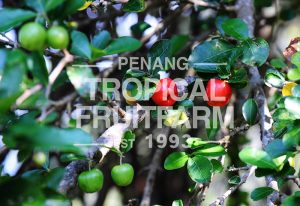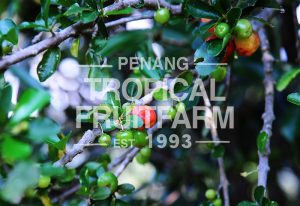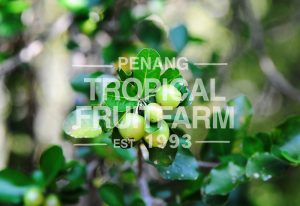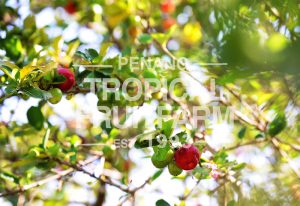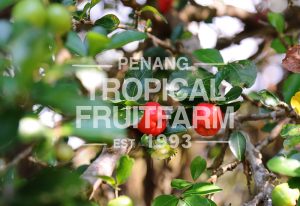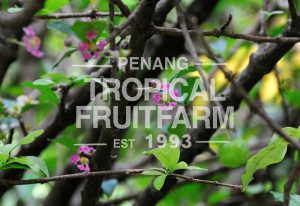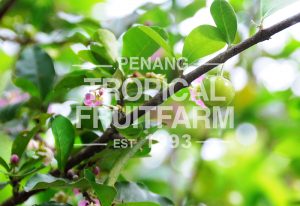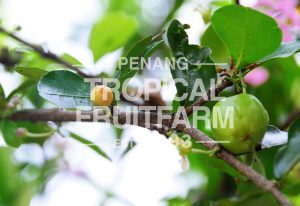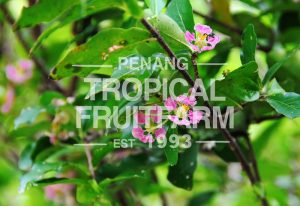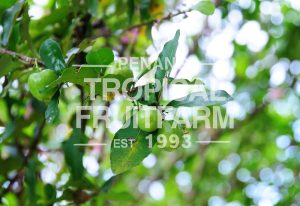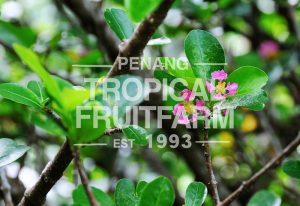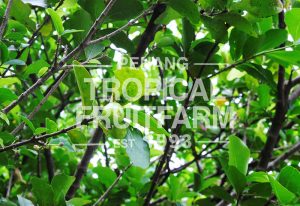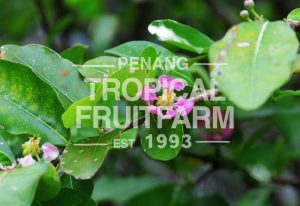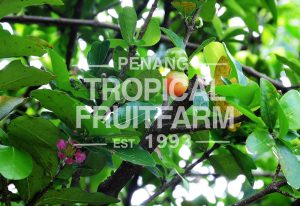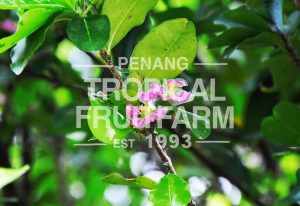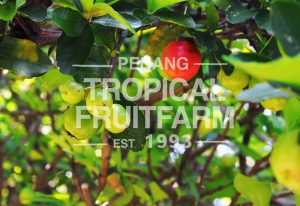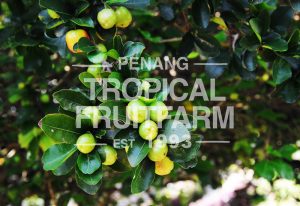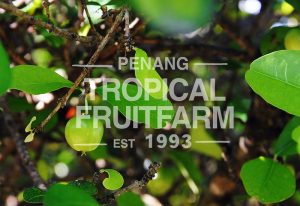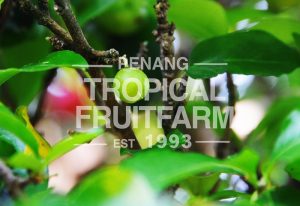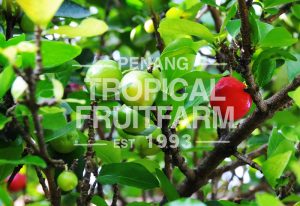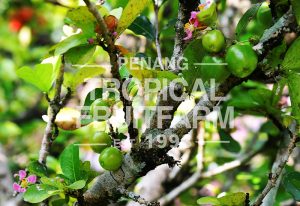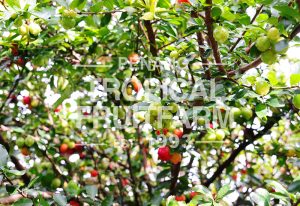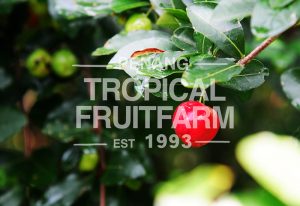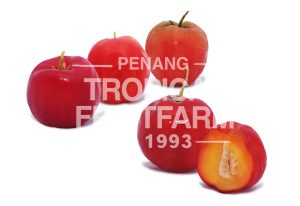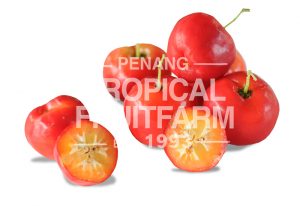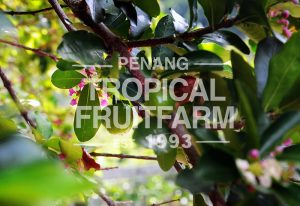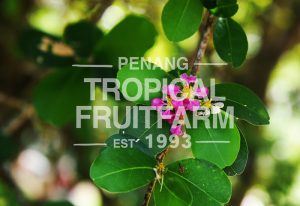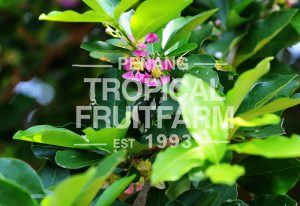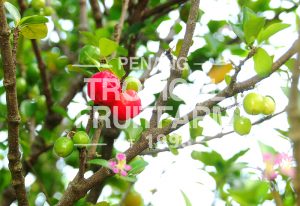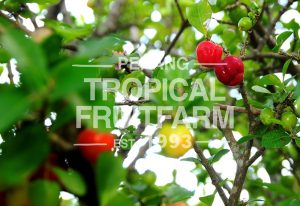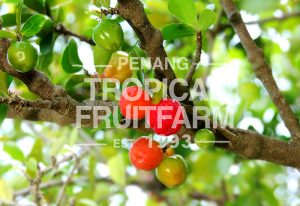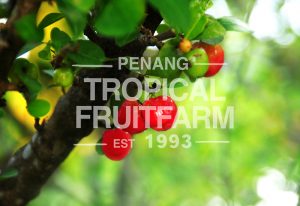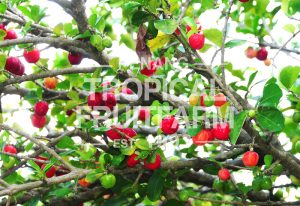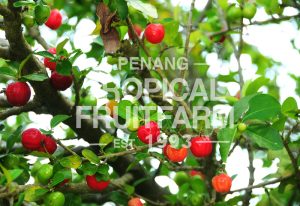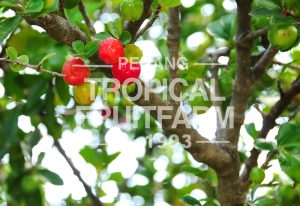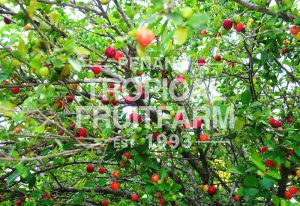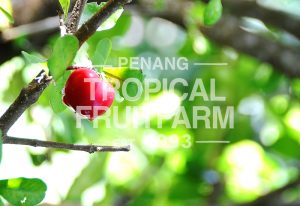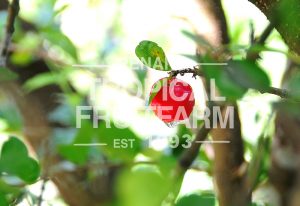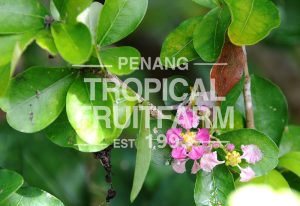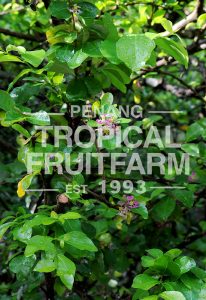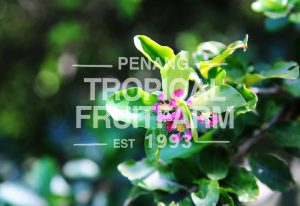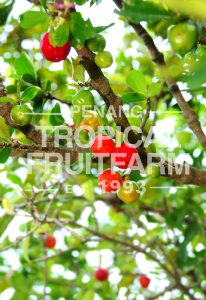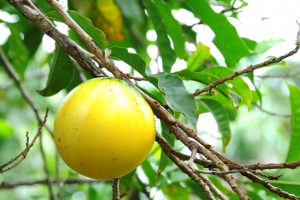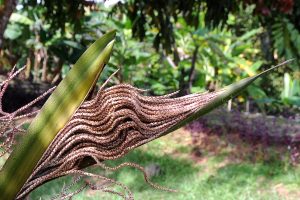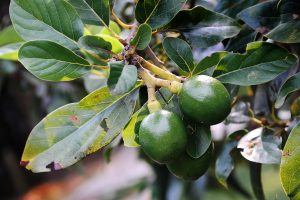| Origin | The acerola is believed to originate from the Yucatan (linguistic evidence) and is distributed from South Texas, through Mexico (especially on the West Coast from Sonora to Guerrero) and Central America to northern South America (Venezuela, Surinam, Columbia) and throughout the Caribbean (Bahamas to Trinidad). Acerola has now been successfully introduced in sub-tropical areas throughout the world (Southeast Asia, India, South America), and some of the largest plantings are in Brazil. |
| Description | Small, bright red, berry-sized fruit resembling the common cherry. These mature fruits are juicy and soft with a pleasant tart flavor. They contain about 80% juice and a large amount of vitamin C, as well as iron, calcium, and phosphorus. |
| Growth Habitat | Large, relatively fast growing bushy shrub or small tree (to 15 feet). Can be pruned to any desired shape, but grows best as a managed shrub. Branches are brittle, and easily broken. The root system is shallow, and trees can be toppled by wind, but they can be uprighted and recover over time |
| Foliage | Acerola leaves are dark to light green, glossy when mature, obviate to lanceolate, with minute hairs which can be irritating. Foliage will drop during water stress, but recovers well with flush and flowering. |
| Flowers | The flowers are bisexual and sessile or on short-peduncled cymes, with small pink to white flowers with five petals. Up to 90% of flowers fall from tree, but "Blossom Set" can be used to counter this effect. Flowering can occur throughout the year, but is typically in cycles associated with rain. Irrigation can be used to induce flowering. Flowering occurs primarily on old growth. Pollination rarely observed, but thought to be by the solitary bee, Centris. Honeybees do not appear effective (contested). Cross-pollination may or may not be required depending on variety or strain (contested). In available cultivars, fruit does set without obvious pollinators or need for cross-pollination. |
| Fruits | Fruits are round to oblate, cherry-like but with 3 lobes. They are bright red (rarely yellow-orange) with thin skin, easily bruised. The pulp is juicy, acid to sub-acid occasionally nearly sweet, with a delicate flavor and apple notes. The fruit is very high in Vitamin C, up to 4,000 mg per 100 g fresh weight, but typically around 1,500 mg C. Green fruits have twice the Vitamin C level of mature fruits. Fruits develop to maturity in less than 25 days. Seeds typically three with fluted wings, forming a triangle. |
| Harvest | The more the fruit ripens the more vitamin content is lost. Acerola fruit is harvested when green, considered the richest source of natural vitamin C known. The fruit deteriorates rapidly once removed from tree; sensory differences can be noted within 4 hours. The fruit undergoes rapid fermentation, and is typically unusable by 3-5 days. Unrefrigerated fruit develops mold quickly |
| Soil | Acerolas grows in marl, limestone, clay and other heavy soils as long as it drains well; waterlogging of roots will cause plant death. Soil pH should be 6.5-7.5 as acid soils do not promote vigorous growth. Liming of trees and working into the soil is a common practice and necessary for high productivity. |
| Pruning | The plant will tolerate heavy pruning, but requires time for recovery. In more tropical areas, plants do not seem overly affected by pruning. Plants are pruned commercially with citrus pruners. Can be kept as a small bush (e.g. 5 ft) and will produce well. |
| Fertilization | Acerolas requires a good, balanced fertilization schedule, and regular (once a year) liming of soil. Foliar sprays are very effective, and are used commercially. Mineral nutrition is very important, with good levels of boron and iron required |
| Propagation | Acerolas can be Acerolas can be propagated by seed, cutting, grafting, and other standard methods. The plant does not appear stringent in its requirements. Seeds are generally very slow to germinate, usually requiring from 6 to 12 months at minimum. Seeds should be kept in moderately moist soil at 70-85F. Do not overwater. Use well-drained soil. Cuttings are considered the simplest method of propagation and, with the use standard IBA hormone, give near 100% success rates. Grafting onto rootstocks has not been systematically studied, although grafts onto Byrsonima crassifolia rootstock have been successful. |
| Nutritional Properties | There are 1677.6 mg of vitamin C in 100 g of fruit. Oranges provide 500 – 4,000 parts per million vitamin C while acerola has a range of 16,000 to 172,000 pa of rts per million ascorbic acid and can contain up to 4.5% vitamin C, compared to 0.05% in a peeled orange. Acerola compared to oranges provides twice as much magnesium, pantothenic acid, and potassium. Other vitamins include vitamin A, thiamine, riboflavin, and niacin. The leaves, bark, and fruit of the acerola also have demonstrated antifungal properties in laboratory testing. |
| Food Suggestion | Eaten fresh or juiced for drinks. The fruit has also been used for baby food, as a supplement source for Vitamin C, as an ice cream and pop-sickle ingredient, and in many home recipes. |
